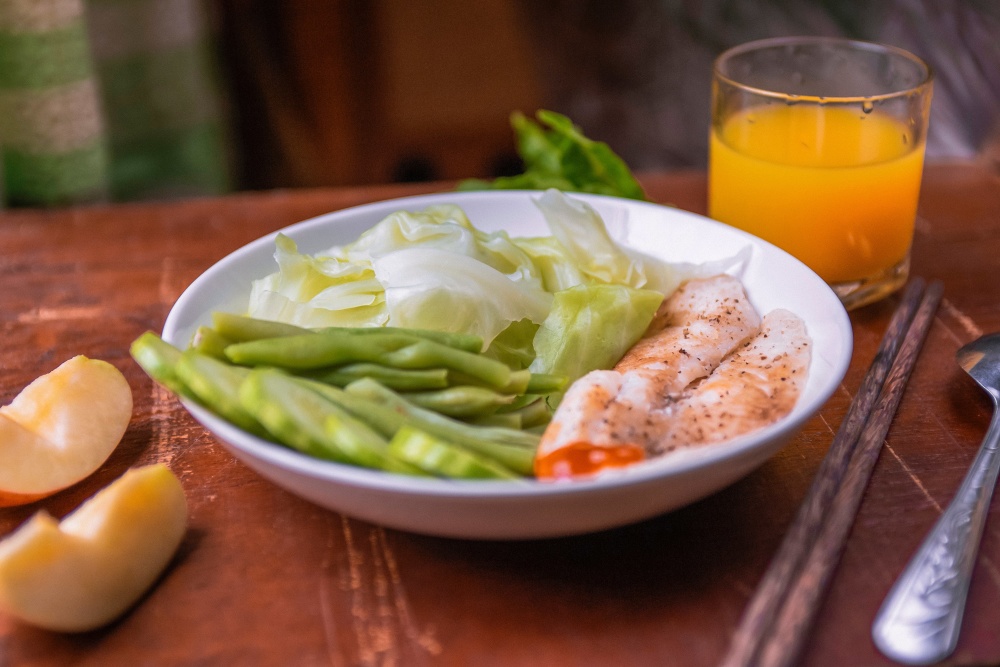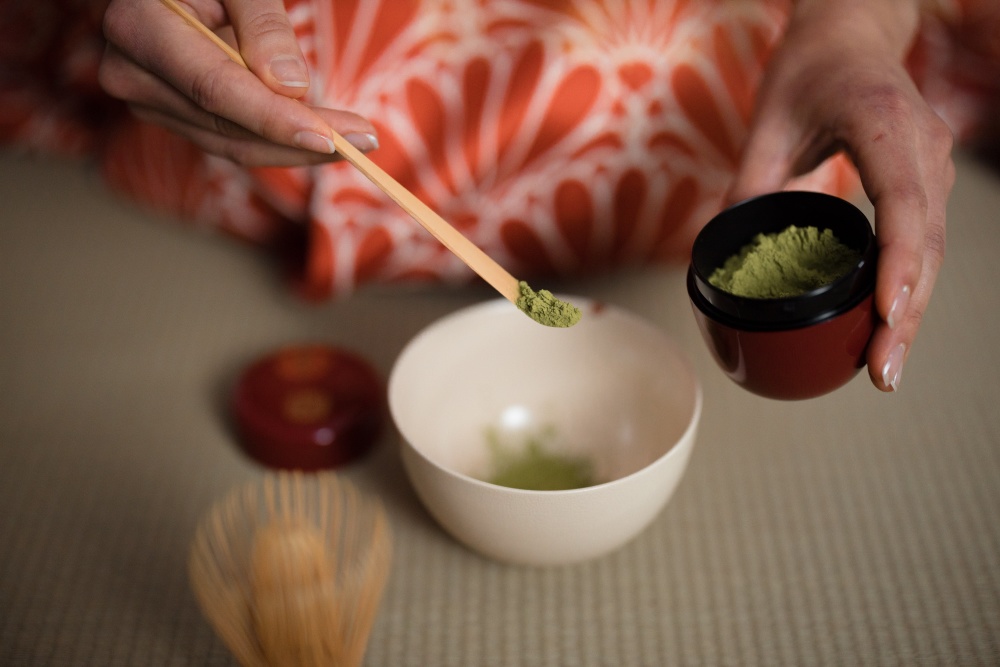Updated August 29, 2025
Why Are Japanese People So Thin?
A lot of people who visit Japan say the same thing: Japanese people are so thin!
But why is that? Is it simply because of the Japanese diet? That doesn't seem to fully explain it. Like many cuisines, Japanese food contains lots of nutrient-dense and sodium-rich foods (though you'll find plenty of veggies too).
So what's the explanation?
Well, daily life in Japan does tend to include a lot of walking. There’s also a strong cultural emphasis on health and an awareness of gaining weight that keeps people in check. But this still doesn't tell the full story.
So, if you’ve ever wondered why people in Japan are so thin — or why the Japanese live so long — you’re in the right place. In this post, I’ll explore why Japanese people are so thin and how they're able to stay that way.
But first, let’s begin by taking a look at some data.
In this article: 📝
Highest Life Expectancy Rate in The World
It’s a relatively well-known fact that Japanese people are healthier than most Westerners, but did you know that they have one of the highest life expectancy rates in the world?
According to data from the OECD, Japan boasts the highest rate of life expectancy at birth among G7 countries and is in the top five in the world overall. Other sources state that the country ranks even higher and is, in fact, in the second spot overall.
If we go by binary gender standards, on average, the life expectancy of Japanese men is around 81.99 years, while women boast an even higher rate at 88.03.
Naturally, quality of life is just as important as longevity, and Japan excels in this aspect too. According to a report from the Cardiology Institute of Montreal, Japanese people’s high life expectancy rates have a lot to do with lower rates of heart diseases and cancers in the country.
However, perhaps the biggest factor that affects the life expectancy rates seems to be the low obesity rates in the country.
In addition to having a longer life on average, Japanese people also struggle with obesity way less compared to countries like the U.S. where obesity is nearly an epidemic. In men, the obesity rates are around a low 31.7% while women are affected even less — their rate is only 21%.
Still, the low rate of obesity isn’t the only factor affecting life expectancy in Japan. The research states that the Japanese people’s secret to a long life is hidden not only in the country’s unique diet and eating habits but also in their active lifestyle.
But before I get to what Japanese people do and eat to achieve these results, let’s talk about a fundamental motto that has been guiding the people of this country in staying healthy and thin for ages.
Hara Hachi Bu: The Culture of Mindful Eating
Have you heard of a philosopher called Kong Qui? Maybe you know him by his Western name, Confucius.
According to Confucian teachings that are based on the philosopher’s wisdom from centuries ago, it’s enough to eat until you’re about 80% full.
This piece of advice stemmed from the idea that it takes around 20 minutes for the mind to realize that the stomach is full, so by stopping at a point where you feel 80% full, you could avoid overeating and, of course, wasting food.
It may be an old belief, but the concept of eating until you’re 80% full, or hara hachi bu (a.k.a. hara hachi bun me), is still very popular in Japan, especially among Okinawans.
In fact, if you go to Okinawa, you’ll hear this phrase spoken before meals, especially by older people, as a gentle reminder not to overeat. Think of it as a sort of mini-prayer before eating, as it helps people set the mood for a mindful session of eating and enjoying food in moderation.
The sentence itself can be translated directly as “until eight parts full” or “eighty percent full,” so the directions are in the name. As many Japanese people follow this teaching or have this mindset taught to them from the get-go, it’s really no surprise that Japanese people are overall thinner and healthier.
A Balanced Diet: Japanese Food Is Lighter Than It Looks

As delicious as it is, Japanese food has plenty of carbohydrates and fats that can easily scare away the health-conscious types. However, there’s more balance to it than you may think.
While Japanese food has noodles, rice, and similar carbs commonly associated with gaining weight, Japanese people consume lots of protein with it, and the fat, fiber, and vitamin contents of their diet are very well balanced.
For one, you won’t find fat-heavy sauces in Japanese cuisine. Sauces are made to pronounce the flavor of the ingredients, not to completely smother it.
Of course, this also results in a lower caloric intake than that of the average American.
The cooking styles are healthier too. Steaming and boiling are more common than frying, and even fried food isn’t deep fried but mostly stir-fried with little oil.
So, it’s not really that Japanese people don’t eat as much carbs as other nations, as you can see in my post on Japanese noodles.
It’s just that they eat lots of protein with it, as well as healthy vegetables that aren’t cooked to death, stripped of all vitamins and minerals, and drowned in fatty sauces.
The Magic of the Japanese Diet: Super Foods Galore

Yes, the Japanese stay healthier due to having a much more balanced mindset when it comes to preparing a meal. They also eat more vegetables and know when to stop once they think they’ve had enough.
However, it turns out that Japan’s secret to health and long life also has to do with certain foods that are quite common in Japanese cuisine.
For one, Japanese people, like many other Asian people, have a lot of soybeans and soy-based products in their cuisine. Soybeans are rich in nutrients that are also known to help prevent and fight cancer.
What’s more, Japanese people frequently eat soybeans in fermented form as well. Miso paste, which is a base in many soups and ramen dishes, as well as the commonly used soy sauce are both made by fermenting soybeans. Fermented foods are known to be rich in healthy bacteria that help digestion, and they promote gut health.
In addition, another item that’s common in Japanese households is green tea (or the more dense, powdered form matcha), which is said to have a variety of health benefits. Studies even suggest that it reduces the risk of coronary heart disease and cardiac death.
So, considering the fact that both of these items are wildly popular in Japan, it’s no surprise that the Japanese have the longest life expectancy of any industrialized nation. After all, they consume lots of superfoods on a daily basis.
Just like we’re dissecting what Japanese people eat to find out why they’re thinner and live longer, we also need to take a closer look at what they don’t eat.
Lower Sugar and Red Meat Consumption
The Japanese diet may be considered healthy based on what it includes, but also on what it doesn’t.
Unlike the United States, where sugar is added to everything and even chocolate tastes sweeter than usual, sugar consumption in Japan is much more moderate.
Even in tea and coffee, most people don’t use sugar, and the types of sugars that are used in Japanese cooking are all healthy sugars as well. These are also called raw sugars and are non-processed, non-bleached, and contain healthy minerals like phosphorus, iron, and calcium that refined white sugar lacks.
Japanese people also don’t eat as much red meat as most Americans. Red meat is full of saturated fatty acids, and the consumption of red meat is also commonly associated with heart disease.
Instead of red meat, however, Japanese people consume almost twice as much seafood and fish compared to Americans. As you may know, unlike red meat fat, the fat found in fish is rich in Omega-3, known to reduce the risk of heart disease, and a common supplement taken by many people in the West.
Most Japanese people simply don’t need these supplements because they get their omega-3 intake naturally, right from the source. So, it’s not hard to imagine a Japanese person staying healthy for longer with a diet such as this.
An Active Lifestyle Goes a Long Way

Let’s be honest: how often do you see a fat Japanese person?
I bet you it’s not all that often. Japanese people eat healthy, but they also stay active, which helps them stay lean.
For instance, public transport use and walking are very popular ways to get to work or school in Japan. This is in contrast to the U.S., where the use of cars is much more common.
For those living in smaller cities or in Japan’s countryside, the inaka, bicycling to work is also quite common, which is a daily workout on its own.
As you can tell, working out, or at least staying active in some way, shape, or form, is important for the Japanese people.
In fact, there are many public community gyms in Japan that are very affordable and don’t require memberships, which allows anyone to get a simple workout done. I talked about these extensively in my post on Japanese gyms.
Finally, you’ll see that even if they don’t work out at the gym, you’ll find older people walking or running their errands by themselves in Japan out on the streets. Even in old age, people find a way to stay active, which helps them live longer.
Societal Pressure: It’s in The Culture
Being the social animals we are, we humans have a tendency to be affected by what others think and say, and this is no different in Japan. In fact, societal pressure is even more prominent here due to the conservative nature of the country’s culture.
Pointing out someone’s weight gain may be an insult in the West, but it’s pretty normal in Japan, despite the culture of concealing one’s true feelings being an important part of Japanese culture. Being thinner is openly valued in Japan, and not being thin causes you to stick out in a major way.
Of course, this isn’t as toxic as it sounds. It’s meant to be more of a nudge towards leading a healthier lifestyle. Try to think of it less as bullying and more as the ramblings of a worried mother looking out for her child.
In fact, in addition to eating less, there’s also a bigger emphasis on eating healthier in Japanese culture. Not only does the culture boast a healthy diet, but children are also taught in school to cook a balanced meal for themselves.
Learning how to cook is seen as an integral part of a child’s education, which promotes an overall healthier lifestyle. This results in food-conscious adults who cook more at home, eat less of those incredibly fatty fast food meals and are familiar with the ingredients that are in their food.
Conclusion: So, Is It Really The Genes?
If you’ve made it this far, you’ve probably concluded that the health and slimness of the Japanese can’t be attributed solely to genetics.
Perhaps the most damning evidence as to why it isn’t just the genes is the fact that Japanese people who move to the West or abandon Japanese eating habits gain weight and have a higher risk of cancer and cardiac death, just like Westerners.
This means that even if Asian genes may give them some sort of advantage compared to the rest, it doesn’t work like magic if you stop eating mindfully and healthily.
So, next time you see an old but youthful and healthy-looking Asian person, don’t just write it off as “good genetics.” Remember that they just might be doing things differently than the rest of us and that we can all learn something from the Japanese way of living.
Get Job Alerts
Sign up for our newsletter to get hand-picked tech jobs in Japan – straight to your inbox.




